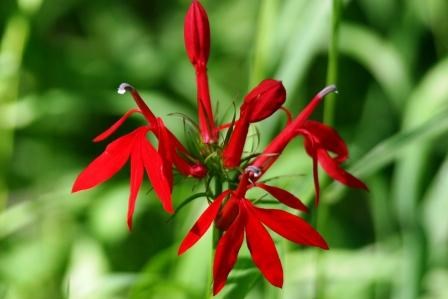
The natural environment of the Upper Mississippi River Valley gave the American Indian and early pioneer settlers an abundance of plants and wildflowers from which the derived both food and medicine. These wildflowers are as varied as the land itself; some populate the upland forests, others line the rich riverbanks; still others grace the sweeping grasslands. Along the base of the bluffs, where the wetland landscape merges with the uplands, the transition from floodplain forest gives way to the upland forest. This transition area produces some of the best wildflower displays in the spring. Early woodland and prairie wildflowers signal winter's end with their exuberant colors. Noteworthy spring flowers are the Dutchman's breeches, wild geranium, bellwort, bloodroot, wild violets, trillium, rue anemone, and wild ginger. As the summer's heat progresses, many species of asters along with may apples, Virginia waterleaf, daisy fleabane, cardinal flower, jewelweed, woodland sunflower, bergamot, and goldenrod add their vibrant colors to the fray. Also the prairies are in bloom during the summer. Take a walk to the native prairie or the restored prairie to see yellow stargrass, wild bergamot, blackeyed Susan, blue vervain, butterfly milkweed, clover, coneflower, Culver's root, flowering spurge, lead plant and many more. |
Last updated: April 10, 2015
